
Golf, perhaps more than any other sport, is facing a crossroads. National Golf Foundation data reveals that a decrease in golf participants from 29,500,000—an all-time high—in 2007 to 25,300,000 in 2012.[i] At the same time, the sport is poised for potential growth, debuting as an Olympic sport in 2016.
Industry leaders are taking advantage of this critical juncture with a range of initiatives and programs, particularly several targeting youth development, that are aimed at launching golf into a newly strong and successful future. There’s good news already, and it’s coming from the courses: sports commissions and CVBs report growing events and flourishing youth development programs nationwide.
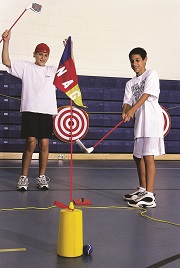
As part of the industry’s effort to harness all possible potential and expand participation, industry leaders and the World Golf Federation launched Golf 20/20, a collaborative effort to shape the sport’s future. Among the many Golf 20/20 initiatives are Sticks for Kids, The First Tee National School Program and PGA Junior League Golf, all of which increase youth exposure to golf, as well as opportunity and equipment.
School programs are, in particular, an important and unique way to impact the future of golf.
“As the president of the PGA South Central section, I know we have to be proactive at offering programs that will grow the sport. If you don’t get them at an early age, they’re going to do another sport,” says Brian Soerensen, head golf pro at KickingBird Golf Club, Edmond, Oklahoma. “At public schools, kids learn baseball, basketball. My daughter even learned hockey. But they don’t learn golf, and we have to change that.”
That’s why KickingBird uses a program called SNAG (Starting New At Golf), which makes golf accessible to young players with larger, plastic clubs and fabric balls. KickingBird ran four sold-out SNAG programs (48 new golfers total) last season, along with one SNAG section at a nearby private school. Because SNAG can be played in non-traditional venues like gyms, it makes golf instruction possible on-site at schools. Building on the program’s success so far, Soerensen and the South Central PGA, which represents all of Oklahoma, Arkansas and part of Kansas, are launching a program to promote SNAG Golf in schools. The South Central PGA is creating a grant program with the aspiration of helping cover the $2,000-3,000 startup costs.
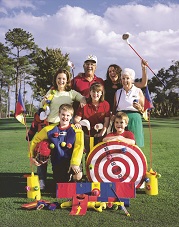 KickingBird has also noticed another trend: when young kids get involved, they bring their parents along as well.
KickingBird has also noticed another trend: when young kids get involved, they bring their parents along as well.
“We’re finding that once the moms and other adults see the kids learning, they want to learn golf, too. We’ve seen involvement among adults increase as a result of SNAG, and our Get Golf Ready program – for beginner adults – is growing, too,” says Soerensen.
All the golf instruction in the world won’t help, however, without a place to play. That’s why KickingBird brings it all together with free play on Mondays for kids (with a paying adult) and family fun nights one Saturday a month, with $7 greens fees and carts. They also use US Kids Golf junior tees, which are placed closer to the greens, so that kids can enjoy playing alongside adults.
It’s no surprise then, that Edmond is a community where golf has grown steadily, despite national trends.
“Edmond is a golf community, and so we may be abnormal, but pleasantly so,” says Cathy Williams-White, director, Edmond Convention and Visitors Bureau. “We have three large high schools, in addition to several private schools and all have strong relationships with KickingBird, our public course. I think the community and its sports events grow together, hand-in-hand.”
With eight courses, Edmond certainly serves as evidence of that theory, hosting a major national golf event every several years since 1986, all with increasing success. Edmond will welcome the US Senior Open at its newly renovated Oak Tree National Golf Course this summer.
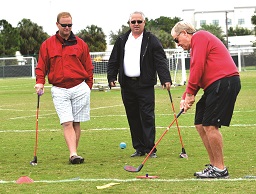
Edmond’s youth golf focus is outstanding, but it’s not unusual. As the learning program used by the World Golf Foundation’s First Tee Program, SNAG is in play at more than 8,000 schools in the U.S. and more than 15,000 worldwide. US Kids Golf, manufacturer of the junior tees as well as a range of custom kid-size golf equipment, operates the U.S. Kids Golf Foundation, which produces over 400 local, regional, national, and international events.
Not only do the managers of youth programs, like Brian Soerensen, report success, but the positive ripple effect can be seen in the higher levels of golf as well.
“We run tournaments for young men and women looking for college scholarships, and we focus on developing those athletes,” says Jason Ross, vice president of tournament development for the American Junior Golf Association (AJGA). “We’ve seen steady growth recently, expanding about six to eight events per year.”
 Providing opportunity to play and train is crucial to developing the next generation of golfers, and as opportunities increase, so does participation. Colorado Springs offers an excellent example.
Providing opportunity to play and train is crucial to developing the next generation of golfers, and as opportunities increase, so does participation. Colorado Springs offers an excellent example.
“We’ve seen youth participation in golf increase in our areas, due in part to the fact that a lot of our schools have really great golf programs for both boys and girls,” says Cheryl McCullough, senior sales manager, sports and special events, Colorado Springs Convention and Visitors Bureau. “Girls are increasing at an even faster rate. In fact, the University of Colorado at Colorado Springs (UCCS) just added a women’s golf team because they see the increase of girls coming out of high school, transitioning to college, and in need of scholarship opportunities. To have those college opportunities in place is perfect for the growth of the sport.”
AJGA is also putting special focus on expanding opportunity strategically. “We study our membership, find where the juniors are, and focus on those areas to make sure our playing opportunity percentages match the membership percentages,” explains Ross.
As part of that attention to growth areas, AJGA has noted recent growth in both the Midwest and Northwest, with participation increasing markedly in the last couple of years. By planning regional events based on participation numbers, AJGA cuts travel costs for its members and ensures that the greatest possible number of athletes have the chance to play.

“The support of the local community really helps as we do these events,” says Ross. “In Ashland, we’ve had volunteers who’ve done the same job for more than a decade. There’s a big economic impact for the community, and they really band together in support of the event. All across the country, communities do the same thing for our events.”
Success Stories
It’s difficult to sustain any amount of growth if athletes can’t find opportunities to compete, which makes event planning a crucial part of golf’s future. Fortunately, the word from America’s courses is that golf events are doing well, and that indicates a positive outlook for the sport as a whole.
Abilene, Texas, has seven courses and the kind of climate golfers adore, welcoming players to the links almost every day of the year.
 “We have hosted the AJGA Aaron's/Bob Estes Abilene Junior qualifier for 27 years. It’s the second longest-running, if not the longest running, event on the tour,” says Debi Schultz, director of sales, Abilene Convention and Visitors Bureau. “In all that time, we have not noticed a significant decline and saw an increase in 2013.”
“We have hosted the AJGA Aaron's/Bob Estes Abilene Junior qualifier for 27 years. It’s the second longest-running, if not the longest running, event on the tour,” says Debi Schultz, director of sales, Abilene Convention and Visitors Bureau. “In all that time, we have not noticed a significant decline and saw an increase in 2013.”
The Adams Pro Golf Tour, which partners with local non-profits to create professional golf tournaments for athletes preparing for careers as PGA golfers, also makes regular stops in Abilene.
“It’s great for the community. We have a large amount of volunteers and spectators that participate and it contributes economically as well,” says Schultz.
The good news for golf continues in Binghamton, New York. Now totally recovered from recent flood damage, Binghamton’s En-Joie Golf Club is welcoming back increasing numbers of golfers eager to play its celebrated course. The flood effects weren’t all bad, however. En-Joie is the host of the Dick’s Sporting Goods Open, part of the PGA Champions tour, and attendance is growing, thanks possibly to the floodwaters.
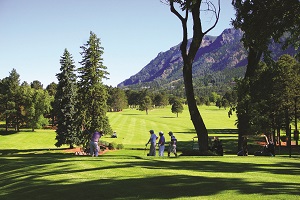
More golf fans can certainly mean more golf players, and Binghamton is doing its part to give those players more opportunity as well. Binghamton offers a golf package to visitors, and sales increased by 10 percent in 2013.
“For 2014, we’re really excited. For the past few years, our package offered three courses and three hotels, and this year, En-Joie is finally recovered from flood damage and can take the increase in play. So we’re able to add the pro tour course to the package.”
Golf is making a strong showing in the central U.S. as well, where growing turnout for adult tournaments, as well as an increase in youth golf development, promise that golf’s growth is here to stay.
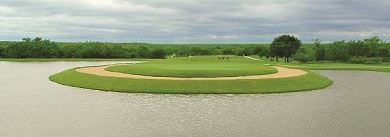 “We host many state tournaments and adult events, and they’re always steady,” says Domico Rodriguez, director of sports & events, Rapid City Convention & Visitors Bureau in Rapid City, South Dakota. “There’s also been a big push at Meadowbrook municipal golf course to get youth involved, with camps and classes throughout the summer.”
“We host many state tournaments and adult events, and they’re always steady,” says Domico Rodriguez, director of sports & events, Rapid City Convention & Visitors Bureau in Rapid City, South Dakota. “There’s also been a big push at Meadowbrook municipal golf course to get youth involved, with camps and classes throughout the summer.”
As with any sport, any event is more successful when there are people in the community who get the sport and support it, and Rapid City is no different.
“I’m a golfer, and I have a young son who’s three,” says Rodriguez. “These early golf programs are really important because golf is difficult. Anyone who plays golf knows that there are so many intricacies to a golf swing. Kids need to see improvement or they won’t stick with it.
Fortunately, golfers young and old have an excellent course where they can improve. Meadowbrook Golf Course, named in 2012 one of the three best South Dakota courses by Golf Week, is using its off-season to create an even better golfing experience, with renovations wrapping up this fall.

“To do youth golf events, I think it’s really important that planners do their homework,” explains Ross. “We base our schedule on school dates, when juniors are off from school. We look at weather, too. You want to be sure you can finish the event. And you have to take into account the costs. We have over a hundred corporate sponsors, allowing us to offer Achieving Competitive Excellence (ACE) grants to juniors who have the ability but not the financial resources.”
Venue selection comes first, says USGA Executive Director Mike Davis, and the community must also measure up.
“Before a venue is selected it is carefully examined by the USGA to ensure it meets key criteria. First and foremost, the golf course must be of excellent quality and design. Can it be set up to adequately test the world's best players? If the answer is "yes," the USGA staff then thoroughly study the operational aspects of the site and local community,” says Davis.
This is golf’s bottom line: with a proactive approach, things are looking up. Golf is growing from the ground up, with its communities and courses leading the way.
[i] “Thoughts from the Golf Industry Show.” Darius Hatami, MAI, Managing Director, HVS Golf Services. July 10, 2013.

